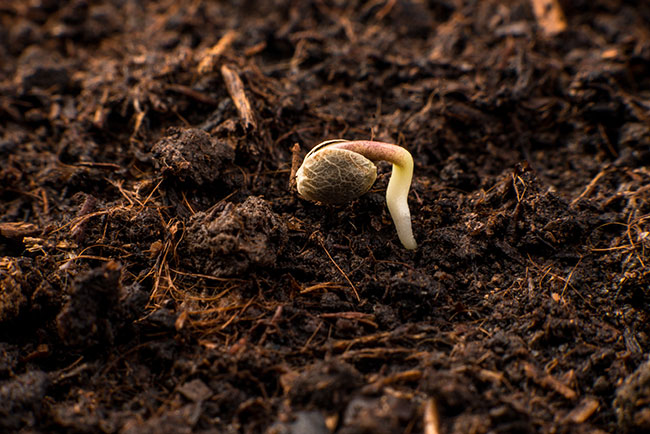
Features
Cultivation
Production
Six steps to a successful cannabis breeding program
August 3, 2020 By Nathaniel Pennington
 Photo: ADOBE STOCK - Iarygin Andrii
Photo: ADOBE STOCK - Iarygin Andrii For any licensed cannabis producer, embarking on a breeding program is no small feat. Doing it right from the beginning is key and will ensure a successful return on your investment. Here are six key considerations when considering to invest in a cannabis breeding program.
Begin with the end in mind
The most important thing is to start with great genetics. If you want to ultimately produce a great product, you have to put the focus on the front end. Whether you choose to go the clone route or with seed, no one decision will play as pivotal a role in the success of your final product and the competitive success of your brand than great genetics. Today’s market demands not just quality, but also novelty.
The seed advantage
One of the biggest advantages for going the seed route is reducing the potential of pests invading your grow operations. Another advantage is not having to stress the plants to move them. Choosing seeds that are well suited to your latitude and specific area’s weather patterns can go a long way in preventing unforeseen setbacks and profit losses. Seeds can be easily and efficiently delivered by the breeder, and are not subject to the same damage risk in transit as clones might be. With today’s more sophisticated lab testing methods you can also be guaranteed, without question, that you are getting exactly what you ordered.
Know your market
Cannabis users are a diverse demographic. It’s important to be clear about who exactly you are looking to appeal to. Choosing a strain that is well suited to your climate and growing conditions is important, but ensuring that it is desirable to your target market is also key. Places like California are trending toward strain diversity, meaning consumers are demanding new and interesting products every season. In this well-developed, sophisticated market there is a thirst for the story behind the brand, and creative breeding by an expert in the field can set your brand apart, and offer that special something that nobody else has.
Working with growing conditions
Taking into consideration temperature highs and lows, photoperiod, wind conditions, soil quality, water availability and the general climate of your area are important in seed selection. The field of cannabis genetics and breeding has come a long way. Expert breeders are now able to create a near-perfect fit for your individual environment, all while bringing out the terpene profiles and flower characteristics that appeal to your target consumers. In places like Canada, where the outdoor growing season is short and plants are subjected to cold nights, high winds and a harsher environment, you may want to choose an autoflower varietal that finishes quickly with flowering time in the 45- to 55-day range. In a more tropical setting, like Jamaica, you would want a variety that can withstand high humidity, is mold resistant and performs well in a coastal environment. The traditional Jamaican Lambs Bread is being crossed with newer genetics to develop a modern version of the strain while preserving the authentic, base characteristics of the historical island strain.
Partner with a trusted breeder
If you find the massive overhead and specialized expertise needed to create your own genetics and breeding program is not realistic for your organization, partnering with a reputable breeder is the way to go. Running a proper breeding program today involves robust populations, copious amounts of data collection, and a skillset that does not naturally overlap with those needed to run a grow operation or production facility. It can take years to develop a stable, true-to-type performer with the desired characteristics. There are insurmountable hurdles in terms of expense, expertise, and employee hours for most producers to realistically undertake themselves. The breeding process has become more highly specialized as the industry has matured, and has become a niche of its own, occupied mostly by experts with years of targeted experience.
Going international
The challenges of bringing new genetics into your production facility depend on your location. The way in which the international laws have been crafted did not take into account the pace at which cannabis breeding would grow and mature, making it difficult to legally procure the desired genetics. The regulations can often prevent entire countries from benefiting from genetics developed abroad. The larger breeders are setting up licensed facilities in multiple countries, with many targeting Canada, South America, Europe and Africa, to get around that issue, grow their business and deliver the creative strains of the future that the market demands.
Nathaniel Pennington, founder and CEO of Humboldt Seed Company has been breeding cannabis for over 20 years. Pennington’s hope is that Humboldt Seed Company’s Pheno Hunt Program will deliver the strains of the future, providing medicinally valuable stable seed lines, and specialty strains that will invigorate the market.
Print this page